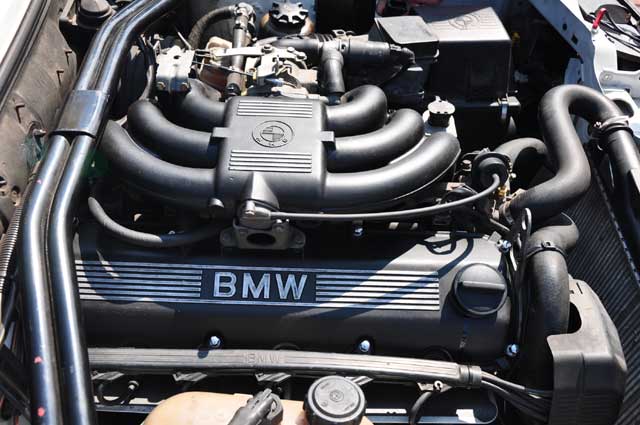Introducing the Intricacies of Next-Generation Power Units: a Deep Study Advanced Engine Layouts and Innovations
As we stand on the precipice of a brand-new age in transportation, the complexities of next-generation engine designs beckon us to discover the innovative technologies and developments that guarantee to redefine the driving experience. Diving deeper into the realms of emission control, intelligent engine management systems, and the horizon of power system advancement, we find ourselves on the cusp of an improvement that guarantees to improve the landscape of wheelchair as we know it.
Advancement of Engine Products

The change in the direction of advanced engine products has likewise allowed engineers to create engines with greater power results while keeping gas efficiency standards. For example, making use of light-weight products reduces the general weight of the engine, causing boosted gas economic situation and reduced exhausts. Additionally, developments in materials innovation have permitted much better thermal administration within engines, leading to boosted integrity and long life.
Turbocharging and Supercharging Technologies
Exactly How do Turbocharging and Supercharging Technologies transform engine efficiency and performance in modern-day cars? Turbocharging and supercharging are innovations that considerably enhance engine performance by raising the amount of air intake right into the combustion chamber. Turbocharging attains this by making use of a wind turbine driven by exhaust gases to pressurize the consumption air, while supercharging uses a belt- or chain-driven compressor to accomplish the same result.
These innovations enable smaller sized, more fuel-efficient engines to create power equivalent to larger ones, called downsizing. By requiring even more air right into the cyndrical tubes, turbocharging and turbo charging boost combustion performance, resulting in boosted horse power and torque output without a substantial rise in engine size. This causes much better velocity, towing capability, and total driving performance.
Additionally, supercharging and turbocharging add to improved fuel effectiveness by permitting the use of smaller sized engines that consume less gas under regular driving conditions - bmw engine. This combination of improved performance and effectiveness has actually made turbocharging and turbo charging integral elements of lots of contemporary engine styles
Exhaust Control and Environmental Influence
With increasing worldwide worries pertaining to air top quality and ecological sustainability, the implementation of emission control innovations in automobiles plays a vital role in decreasing damaging contaminants launched right into the ambience. Modern cars are geared up with advanced discharge control systems that assist lessen the ecological influence of auto procedures. Catalytic converters, as an example, are made to transform poisonous gases such as carbon monoxide gas, nitrogen oxides, and hydrocarbons into much less harmful substances like co2 and water vapor.
In addition, developments in engine modern technology, such as the assimilation of exhaust gas recirculation systems and careful catalytic reduction, have significantly added to reducing discharges. These technologies work in tandem to maximize burning effectiveness and minimize the release of dangerous toxins right into the air. Furthermore, the development of hybrid and electrical automobiles represents an essential step in the direction of reducing the total ecological footprint of the transport market.
Intelligent Engine Administration Equipment

Furthermore, these systems make it possible for cars to meet rigid emissions criteria without jeopardizing performance, supplying a more eco friendly driving experience. The combination of artificial knowledge and artificial intelligence abilities in engine monitoring systems remains to press the boundaries of what is feasible, leading to additional renovations in efficiency, dependability, and total automobile performance. bmw engine. As automobile modern technology advancements, smart engine monitoring systems will play a vital role in forming the future of transport in the direction of a more reliable and sustainable direction
Future Trends in Power System Growth
As smart engine monitoring systems lead the way for improved control and optimization in modern-day lorries, future fads in power system development are poised to redefine the landscape of vehicle propulsion technologies. These alternative power sources provide improved efficiency and efficiency while lining up with rigorous environmental policies.
Another substantial fad is the combination of sophisticated products and producing techniques. Light-weight materials such as carbon fiber and aluminum are being utilized to lower total car weight, enhancing gas effectiveness and performance. In addition, advancements in 3D printing and additive production are allowing the production of intricate engine components with greater precision and durability.
Additionally, synthetic knowledge and artificial intelligence are playing an essential duty in enhancing power device performance. These technologies allow for real-time tracking and adaptive control, causing more reliable and reputable power why not try here shipment. On the whole, future trends in power device development are geared in the direction of performance, efficiency, and sustainability, driving the automotive industry in the direction of a new age of propulsion modern technologies.

Final Thought
In Read Full Report conclusion, the innovations in engine materials, turbocharging, emission control, and smart monitoring systems have led the way for next-generation power systems. The complex layouts and innovations in modern engines showcase the ongoing development of auto technology.
Exploring the progressive developments in engine materials has been crucial in enhancing the performance and efficiency of modern engines. Over the years, the evolution of engine materials has played an important role in pressing the boundaries of what engines can achieve.The change in the direction of advanced engine products has likewise made it possible for designers to make engines with greater power outcomes while keeping fuel performance criteria.The implementation of smart engine administration systems in contemporary lorries has revolutionized the means engines are regulated and optimized for efficiency and effectiveness. By collecting data in real-time and assessing it with advanced formulas, smart engine management systems can adapt to driving websites styles, environmental elements, and engine wellness to optimize power result while decreasing gas consumption and exhausts.